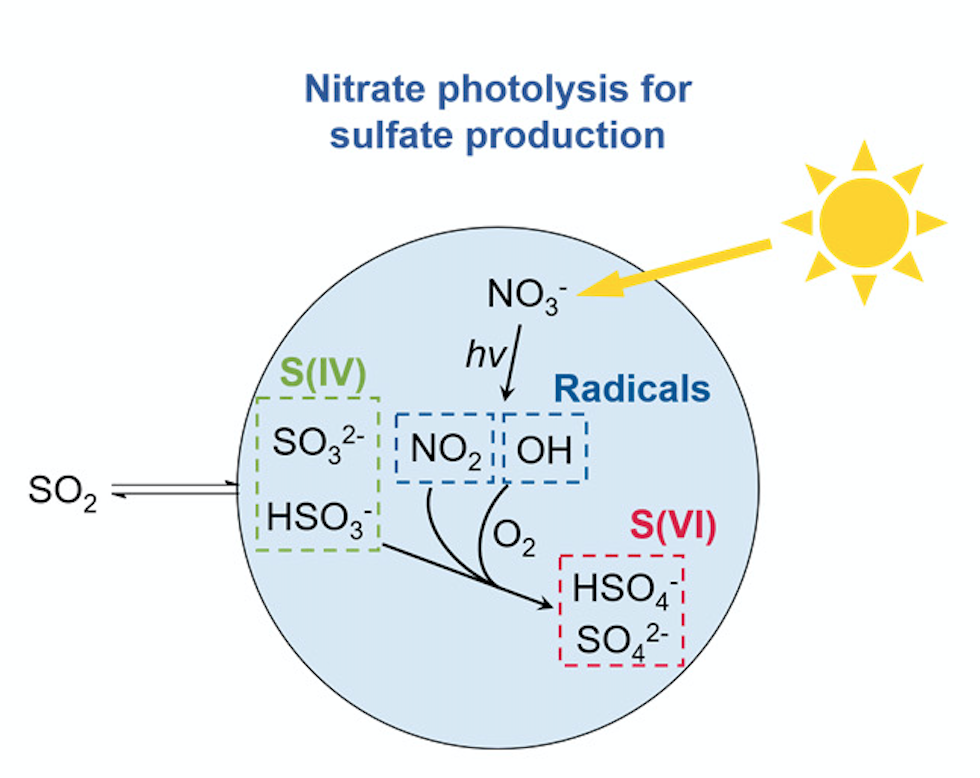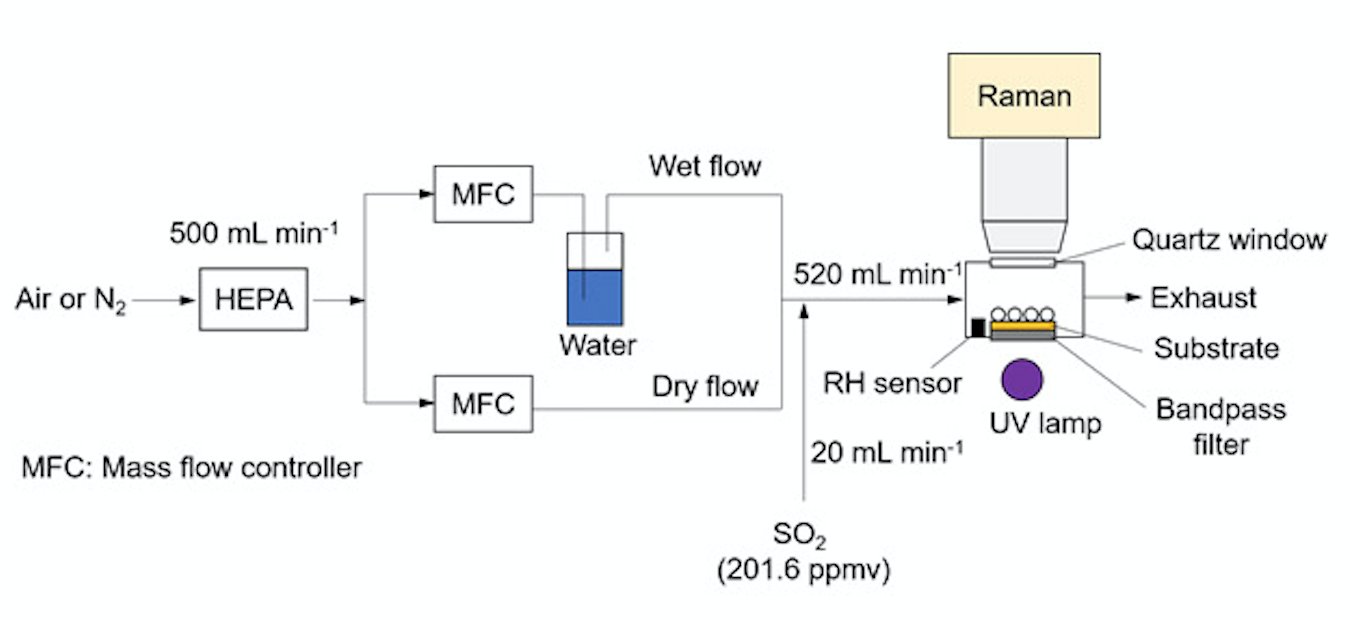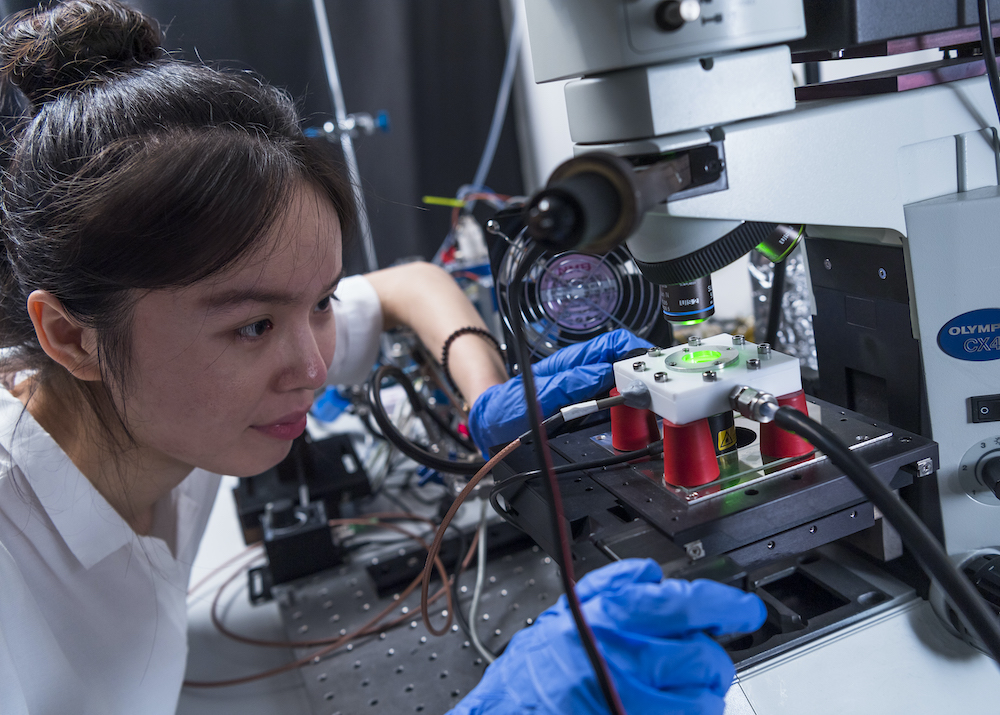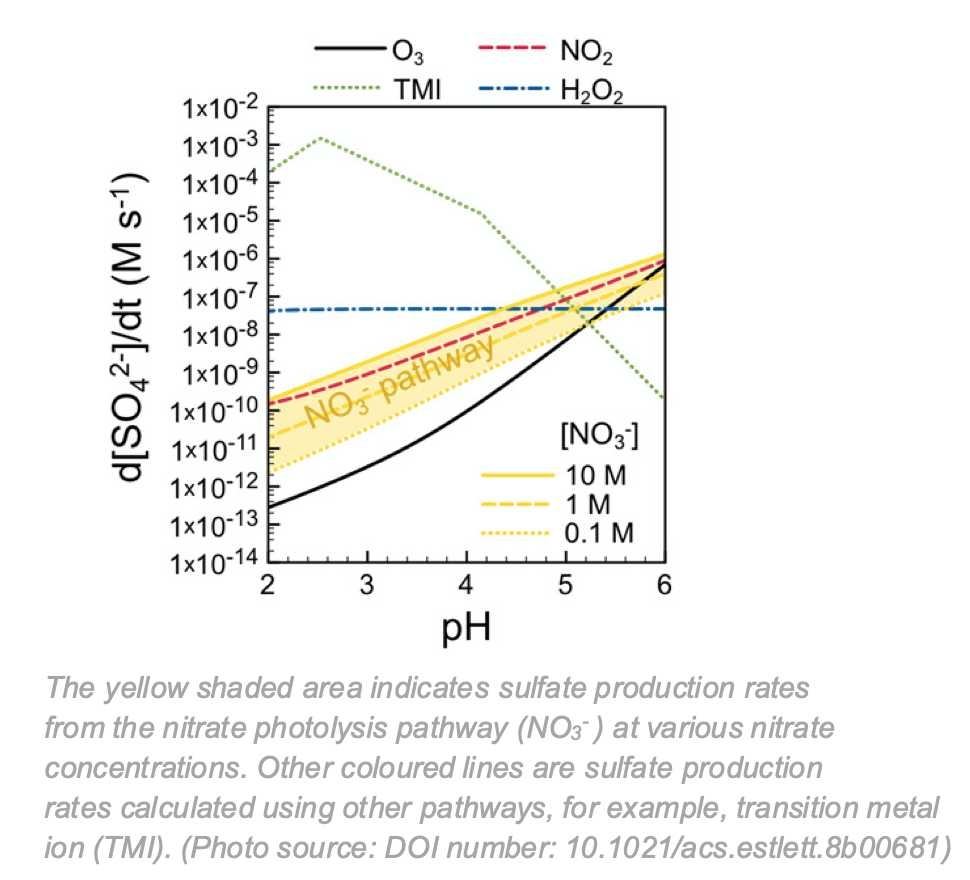Revealing the new formation mechanism of haze pollutants
Haze episodes occasionally happen in mainland China. Scientists have been trying to develop air quality models to predict the pollutants’ concentration and investigate the formation mechanisms of haze pollutants, in order to provide scientific guidance for the control of air pollution. However, there has been a huge gap between the model predictions and the field observations which hinders air pollution control. A research team comprising scientists from the School of Energy and Environment at City University of Hong Kong (CityU) has suggested a much less explored pathway that could contribute significantly to the formation of sulfate, one of the major pollutants found in haze episodes.
The research team is led by Professor Chan Chak-keung, Dean and Chair Professor of Atmospheric Environment of theSchool of Energy and Environment at CityU. The team conducted experiments and proved that nitrate photolysis is one of the important formation pathways of sulfate. Their findings were published last year in the journal Environmental Science & Technology Letters, titled “Heterogeneous SO2 Oxidation in Sulfate Formation by Photolysis of Particulate Nitrate”. And it was selected as one of the best papers of 2019 by the journal.
Fill the gap between model prediction and field measurement in pollutant formation
Environmental Science & Technology Letters is one of the top journals in the environmental field. Professor Chan’s research was selected as one of the five Best Papers out of the 123 papers published in 2019 by the journal’s editorial team. And out of the five Best Papers, it is the only one about atmospheric research. “It is a great honour to be selected. Our findings provided a new mechanism for explaining the formation of sulfate in haze episodes, and it has aroused interest in the related research community,” said Professor Chan whose research interests include air pollution and aerosol chemistry.
Professor Chan pointed out that one of the major research topics regarding air pollution is how air pollutants are formed in the atmosphere. “As the Chinese government has imposed measures to control the emission from cars, power plants,factories, and catering, the primary emission sources of the air pollutants are decreased gradually. Hence, there is an overall improvement in air quality in mainland China throughout the years. However, haze episodes (huge increase in air pollutant concentration) still happen occasionally and even develop into a regional environmental issue, affecting developed areas like the Jing-Jin-Ji Region (Beijing-Tianjin-Hebei) and Yangtze River Delta. Actually, why do haze episodes still occur?” Professor Chan asked.
Scientists have been trying to predict the concentration of the major particulate components found in haze episodes based on the well-known formation mechanisms. However, studies revealed that the existing air quality model underestimatedsulfate concentration, and sometimes overestimated the concentration of nitrate in atmospheric particles. “There is still a big gap between the predicted concentrations and the field measurements even for the best models. The inaccuracy may be due to some formation mechanisms which are missing in the existing models. And the formation mechanisms of sulfate, a major kind of secondary particulate matter, has become a hot topic,” Professor Chan explained.
Sulfate (SO42-) is an important component of atmospheric aerosol particles, mainly formed upon the oxidation of sulfur dioxide (SO2) which is produced from the burning of fossil fuels like coal and petroleum. Nitrate (NO3-), another common pollutant with high concentration, is the oxidation product of nitrogen oxides (NOx) which is found in the emission from coal burning, cars, and power plants. Currently, sulfate and nitrate are both major particulate pollutants in mainland China, seriously affecting the air quality.
Sulfate formation explained by nitrate photolysis mechanism
Previous studies have revealed that high concentrations of sulfate and nitrate are both observed in haze episodes.However, the exact mechanism of sulfate formation during haze episodes remains unknown.

To solve the puzzle, Professor Chan’s team probed into the correlation between the formation of nitrate and sulfate. The team proposed that the nitrate photolysis mechanism could be the key source of producing oxidants for sulfate formation.“Upon light irradiation, nitrate is photolysed to generate lots of oxidants, including nitrogen dioxide (NO2) and hydroxyl radical (OH). These oxidants would then convert the sulfur dioxide into sulfate in the atmosphere,” explained Professor Chan.
To verify this hypothesis, the team investigated the oxidation reaction of sulfur dioxide during the nitrate photolysis process. They used a Raman spectroscope (an instrument that scans and analyses the composition of materials) to observe the variation of sulfate and nitrate concentrations in the examined particles. The main conclusion of the experiment suggested that in the presence of UV irradiation and air, nitrate photolysis would facilitate the oxidation of sulfur dioxide and produce sulfate.

Moreover, the experiment results showed that the sulfate production rate increased with an increasing nitrate concentration. Also, the sulfate production rate was related to the UV intensity. In addition, it was found that the sulfate production rate at 300 nm illumination, an atmospherically relevant wavelength, under nitrate photolysis was about 3 times higher than that at 250 nm. The results further verified that the nitrate photolysis mechanism could also effectively facilitate the formation of sulfate in the actual atmospheric radiation.

Besides, the team found that the estimation of sulfate production based on nitrate photolysis, that is, taking into account the oxidation mechanism of both nitrogen dioxide and hydroxyl radical, was 100 times more than merely estimating by the nitrogen dioxide oxidation mechanism.

Comparing with other known mechanisms of sulfate production, the team discovered that the nitrate photolysis pathway could contribute significantly to the overall sulfate production at pH 4−6. pH 4−6 is the typical pH range of the particles found in mainland China’s haze episodes.
“Our research findings can help to improve the existing prediction models regarding the atmospheric sulfate concentration, which will provide more accurate information for policymakers in formulating measures to reduce key pollutants,” concluded Professor Chan. It took the team about a year to conduct the experiment in CityU and finish the study.
The research team is collaborating with research teams from Tsinghua University and Harvard University, aiming to integrate the nitrate photolysis pathway into the existing air quality model, to further enhance the accuracy of the model’s predictions. The research team is also further exploring the relationship between nitrate photolysis and the formation of secondary organic particles in the atmosphere.
Professor Chan is the corresponding author of the paper. The first author of the paper is Dr Masao Gen from CityU’s School of Energy and Environment (currently an Assistant Professor at Kanazawa University). Other co-authors are PhD student Zhang Ruifeng, also from CityU’s School of Energy and Environment, Professor Li Yongjie from University of Macau, as well as Dr Huang Dandan from the Shanghai Academy of Environmental Sciences.

The study was supported by the National Natural Science Foundation of China, and the Science and Technology Development Fund of Macao SAR.
DOI number: 10.1021/acs.estlett.8b00681